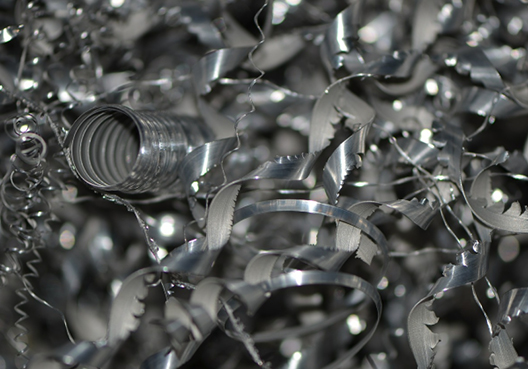
At J Davidson we’re talking scrap in 2019 – so you can expect updates on our scrap metal recycling activities and some extra insights into how our customers are keeping us busy with mountains of metal to process.
You can follow the hashtag #jdavidsonweretalkingscrap to find our latest updates, which we started back in autumn 2018 with a look at some of the more unusual scrap metal collected by our fleet.
With the new year underway, we’ve been looking more at the quantities of scrap metal for recycling and especially at our scrap metal for export.
Exporting scrap metal means we can get the best prices for it on the global market – which helps us to offer the best prices for scrap metal when you sell it to us in the first place.
What scrap metal have we been handling?
It’s been a busy start to the year. By January 25th we had 200 tonnes of steel turnings ready to be loaded up for export – these are the worms of scrap steel (sometimes called ‘swarf’) that come off of the drill bit after drilling or from similar machining processes.
Recycled steel turnings are a particularly good product as this is an excess by-product of machining the steel – and the steel section itself can still be used for its intended purpose – making swarf recycling a way to get many tonnes of new steel from all of these small quantities of waste combined.
On January 28th another shipment of scrap metal recycling was ready to go for export, this time a massive mountain of 400 tonnes of HMS 1.
HMS 1 is heavy melting steel – the ‘1’ denotes that it is free from galvanised and blackened steel, whereas HMS 2 would be a shipment of recycled steel including blackened and galvanised surfaces.
Main types of scrap metal recycling
Scrap metal recycling depends on many different factors, from the size and shape of the metal, to the presence of contaminants, to surface finishes like galvanisation.
One useful way to think about scrap metal recycling is in terms of age, and there are three general categories for this:
• Immediate scrap steel, sometimes called ‘home scrap’, generated within steel mills themselves.
• Scrap as a by-product of manufacturing, such as steel turnings, also called ‘prompt scrap’.
• Long-term scrap metal from structures reaching the end of life, called ‘obsolete scrap’.
Steel poses a unique challenge because once in situ, it can last for many decades before it becomes obsolete. Examples of this include large buildings, bridges, rail infrastructure and so on.
However, when it reaches obsolescence, steel can be recycled again and again with no loss of quality, and reused for many different purposes.
This means scrap metal for recycling is always in demand – helping us to pay the best prices for scrap metal recycling while making sure we do our part to protect the environment and conserve usable steel stocks throughout 2019 and beyond.





